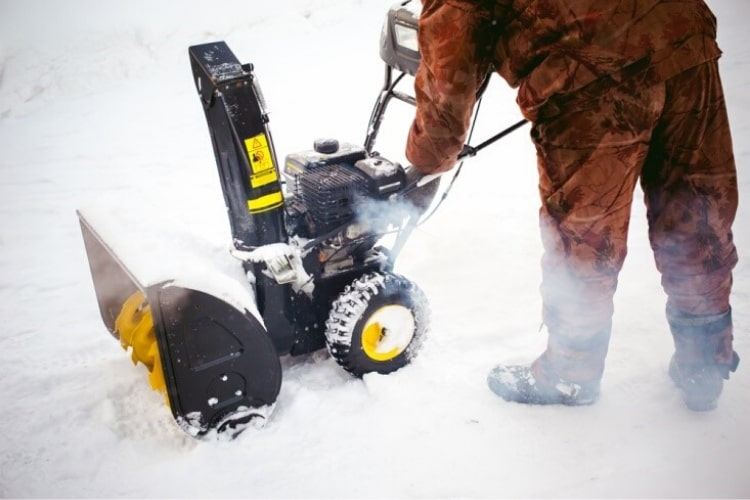Clever Backups When Your Snowblower Won’t Start
We’ve all been there.
Eighteen inches of snow fell during the night, you’re running late for work, and then the unthinkable: your snowblower won’t start!
You could wake the kids up from their toasty slumber, or run to the neighbor’s house and ask to borrow theirs… at 4:00 am.
But in all seriousness, what can you do if your snowblower won’t start? You could use a bit of starting fluidOpens a new window, but that’s not always recommended for small engines. If you’re pressed for time like in the above scenario, a leaf blower can do the job – but only if it’s the light and fluffy kind of snow. Wet and heavy snow requires a bit more elbow grease and a high-powered leaf blower.
There’s not much you can do once the snow has fallen if your snowblower won’t start – especially if you don’t have much time. These tips and tricks can help make sure your snowblower starts the first time, every time. And even if it doesn’t, you’ll know right where to look to find the source of the problemOpens a new window quickly.

Storage & Maintenance
- Always add a fuel stabilizerOpens a new window to your fuel cans each time you put fresh gasoline in them. Do this before you put the gasoline into your snowblower. It helps keep the engine and other moving parts clean by helping fuel stay fresher longer. This one step can help eliminate many normal issues.
- When snow season is done, you should fill the gas tank with stabilized fuel.
- After you’ve topped off the tank with fuel, it’s time to seal the engine. Remove the spark plug and put a small drop of oil in the snowblower’s combustion chamber. Pull the starting cord gently just a few times. This lubricates the piston and the inside of the cylinder wall. Put the spark plug back in place and keep gently tugging on the cord until you feel a bit of resistance. This means that all air has been removed and the engine is now sealed against moisture – which means no corrosion. When winter rolls around again, consider replacing the spark plug with a new one.
- This step is one of the most overlooked but can ensure your snowblower stays newer longer. The salt on roads and driveways can get into your snowblower during use and, if left, can cause corrosion. In a cold and wet environment, this can wreak havoc on the metal components of your machine. Wipe down your snowblower with a cloth slightly dampened with warm water. After the cleaned parts have dried, spray your machine with a rust inhibitorOpens a new window to further prevent corrosion.
- Finally, cover your snowblower until next season. You don’t want to have done all the above just to leave it open to the elements. Cover the machine and store it someplace cool and dry until the snow flies once again.
So, you could wake the kids… but it’s probably best to follow these tips and keep your snowblower maintained.





